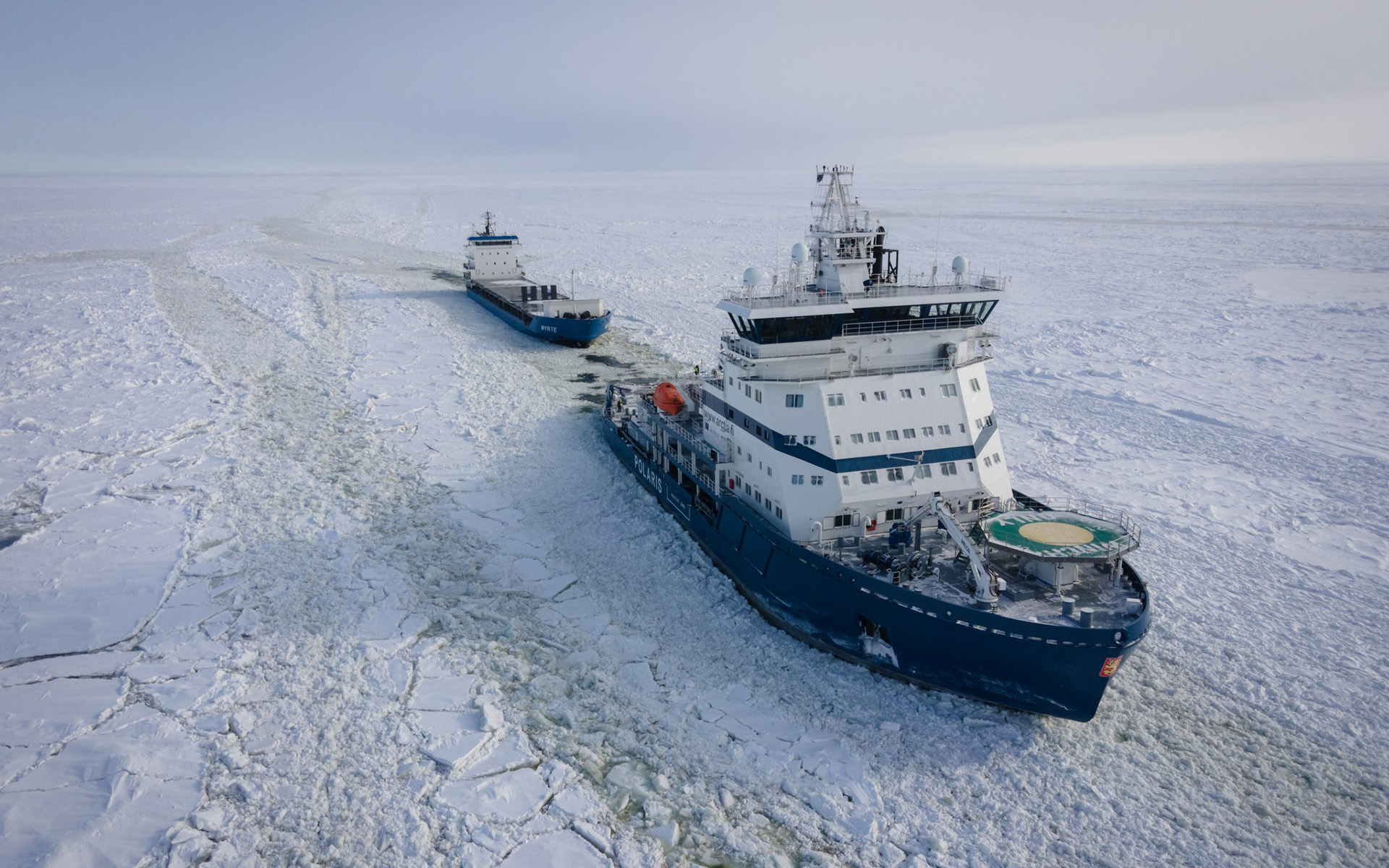Traffic Situation service
Information about road traffic (incidents and roadworks, congestions, road condition cameras), punctuality information about trains and sea traffic's warnings.
Give feedback
Here, you may give feedback, ask questions, suggest improvements and report issues regarding roads, railways and waterways. We process messages on weekdays.
Finnish Transport Infrastructure Agency
The Finnish Transport Infrastructure Agency is responsible for developing and maintaining the state-owned road network, the railways and the waterways. Through our tasks, which include maintaining the level of service of transport, we promote well-being in society and competitiveness of Finnish industry.
Are you looking for these?
Information for professional transport
News
The winter of the icebreaking season 2022–2023 was mild and the season lasted 167 days
Published 2.6.2023 13.31
The icebreaking season started on 11 December 2022 when Otso left for the Bay of Bothnia as the first icebreaker of the winter. The last icebreaker to return to Katajanokka was Kontio (on 26 May 2023). Thus, the icebreaking season lasted a total of 167 days. In the Gulf of Finland, the icebreaking season started on 6 January and lasted until 12 April.

The icebreaking season started slightly later than in 2021 even though the first assistance restrictions were already introduced in early December. In fact, in December there were still signs that the winter would be characterised by average temperatures or that it might even be slightly more severe than average. However, due to mild weather, growth of ice coverage already slowed down in late December.
The early part of March was cold and the maximum extent of the ice coverage was recorded on 12 March, two weeks later than average. On that day, ice covered an area of 81,000 km2, which means that the winter 2022–2023 is classified as mild. According to the statistics compiled by the Finnish Meteorological Institute, the fourth lowest ice levels since the year 2000 were recorded this ice season.
Seven icebreakers were in operation
“Despite a mild winter and a fairly limited and thin ice coverage, seven of the nine icebreakers were in use, which indicates that merchant vessels have become less capable of navigating in ice and need more assistance,” explains Helena Orädd, Head of Maritime Transport Unit at the Finnish Transport Infrastructure Agency.
A total of seven icebreakers were in operation in the Finnish sea areas during the season. Otso, Kontio, Sisu and Polaris operated in the Bay of Bothnia. Zeus of Finland mainly assisted vessels in Vaasa and Kaskinen but towards the end of the season, it also operated in the southern parts of the Bay of Bothnia. Swedish icebreakers also assisted Finnish maritime traffic in the Bay of Bothnia for 54 days. Icebreaking in the Gulf of Finland was the task of Urho and the Calypso-Saimaa combination.
The icebreakers logged a total of 684 operating days, which clearly indicates that the season was characterised by mild weather. In the season 2021–2022, icebreakers logged more than 900 days.
During the season, the icebreakers sailed a total of about 44,789 nautical miles, which is about 82,945 km or twice around the globe. There were a total of 8,715 ship calls to ports with assistance restrictions (inbound 4,362 and outbound 4,353).
During the season, a total of 1,262 assists were made in the Finnish sea areas, of which 77 involved towing. In the season 2021–2022, assists totalled 2,271.
The assistance restrictions were in effect between 1 December 2022 and 26 May 2023. The average waiting time for icebreaker assistance was 3.6 hours. About 96.89% of all vessels were able to enter the ports with assistance restrictions without waiting.
The assistance restrictions determine which vessels are entitled to icebreaker assistance in Finnish ports. The assistance restrictions depend on the vessel’s ice class, engine output and size as well as the prevailing ice conditions.
The Finnish Transport Infrastructure Agency is responsible for the public office duties and procurement associated with winter navigation as well as for the national coordination, development and control operations.
Read more about winter navigation
More information
Helena Orädd, Head of Unit, tel. +358 29 534 3321, [email protected]
Tuomas Taivi, Senior Maritime Officer, tel. +358 29 534 3328, [email protected]
